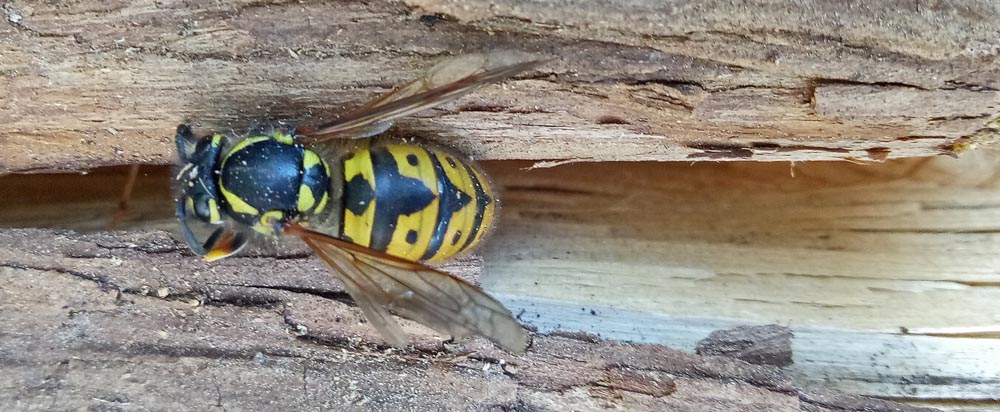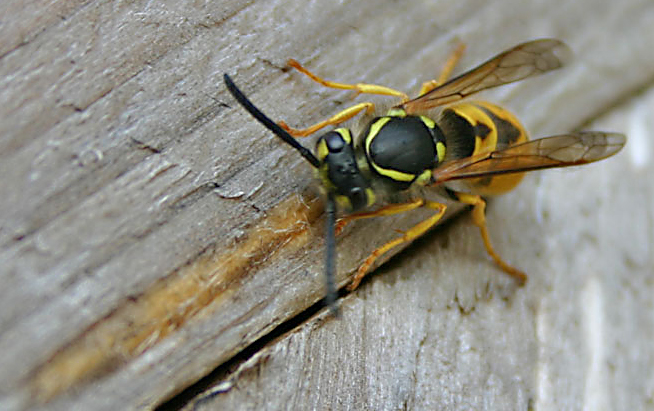Follow
the podcast on


The Vespula group of invasive wasps are still active, but starting to show signs of slowly shutting up shop for the winter. Vespula germanica (German wasp) and Vespula vulgaris (common wasp) are the two species with no sense of humour in New Zealand.
At this time of the year the action is all about the queens: the old queens (as well as the males and old workers) are facing the end of their lives, and the brand-new queens are preparing for hibernation.
For new queens that means mating in May – after that she can find a nice spot to hibernate till mid-September. I usually find them in stored firewood, nice dark nooks and crannies.
This is also the time when most active wasp nests die – early winter. Most, but not all!
Some nests (around 5-10%) survive the winter and grow bigger and bigger during the following year – a couple of meters in size with a million cells. Now, that is a decent method of production of babies and adults.
A nest that survives the winter has the advantage of carrying on without requiring the construction of a new nest.
During May, young queens go on the look out for a hibernation site. During winter that will be a very quiet place (until you come cross that afore mentioned firewood stash in the shed).
 Overwintering Vespula Queens
Overwintering Vespula Queens
In spring, when temperatures become a little more agreeable, the queens will leave the hibernation spot and try locate some sustenance in the form of early-flowering plants with nectar.
This will start the early-season cycle off – finding a small nest site and starting a brand-new nest is the very first priority.
Chewing wood to create a version of paper mâché is a clever way the wasps produce cells where the larvae (young immature wasps) can live for 30 to 45 days, initially fed by the queen (later by the workers as the nest grows larger).

Wasp chewing wood to masticate into cells.
LISTEN ABOVE
Take your Radio, Podcasts and Music with you









